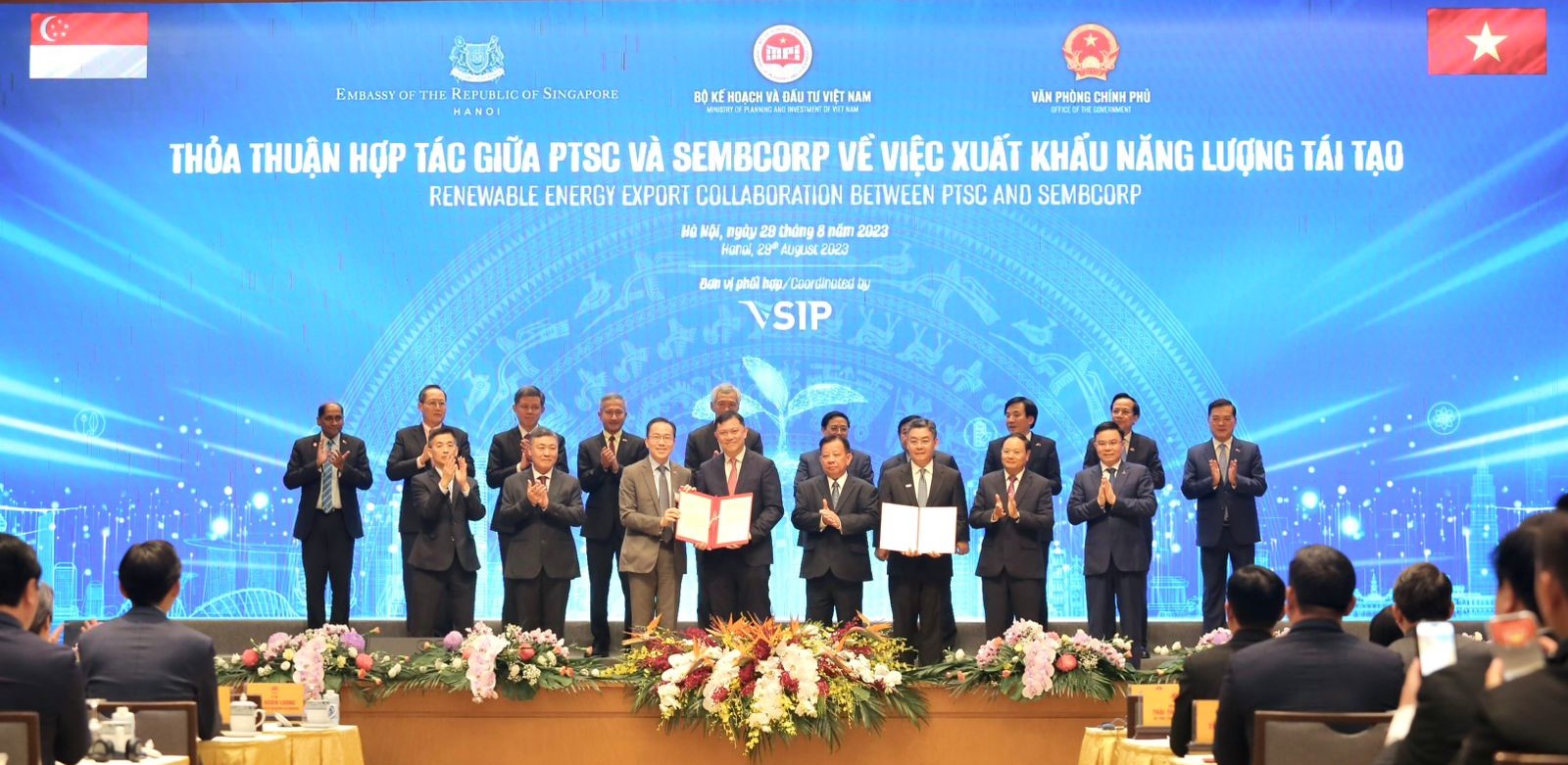Singapore will import 1.2 GW of low-carbon energy from Vietnam, primarily wind power, with the hope that it will fulfill the nation’s target of importing 4 GW of renewables by 2035 through electricity imports.
The imports from Vietnam could potentially account for 10% of Singapore’s annual needs, and will be transmitted via new subsea cables that will span a distance of around 1,000 km, said the Energy Market Authority (EMA) on Oct. 24.
This comes after similar deals were signed to import 2 GW of electricity from Indonesia and 1 GW from Cambodia, which is a mix of hydropower, solar and potentially wind power. The imports will in total make up around 30% of its energy mix in 2035.
Second Minister for Trade and Industry Tan See Leng said at the Singapore International Energy Week on Oct. 24 that EMA has given conditional approval to Sembcorp Utilities to import electricity from Vietnam’s PetroVietnam Technical Services Corporation.

PTSC granted the approval for conducting comprehensive surveys for an offshore wind farm project in Vietnam August, aimed at facilitating the export of electricity to Singapore. (Photo:PTSC)
He also added that the country has completed the first phase of a study with the US to examine the existing and potential power interconnections in ASEAN, and the socio-economic benefits of regional energy connectivity.
“The findings will highlight the benefits that energy interconnections will bring to the region. This includes emissions reduction, lower capital and production costs, greater resource adequacy and power supply resilience, as well as economic benefits through the creation of green jobs, “he said.
ASEAN boosts cross-border electricity trading
Citing the Laos-Singapore hydropower project, which iniciated in June 2022 and involved importing up to 100 MW of renewables via Thailand and Malaysia, Tan pointed out that cross-border electricity trading across multiple countries can become a reality in Southeast Asia.
“Since its commencement, about 270 GWh of electricity have been exported to Singapore from Laos. All four countries are now discussing how to enhance this project, including trading at capacities beyond 100 MW and facilitating electricity flows in all directions,” he said.
The minister also mentioned that solar will be the primary source of renewables from Singapore’s renewable energy imports, given its land scarcity, which poses as a constraint to deploying the energy on a larger scale.
Solar projects are advancing
While the city-state has the goal of achieving 2 GW peak of solar by 2030, this would still only account for less than 10% of its future energy mix.
Solar deployment has already surpassed 1 GW peak so far, which would mean that Singapore is now “more than halfway” to achieve its target. “To get there, we are pursuing the next bound of innovative solar deployment,” said Tan.

Singapore plans to use rooftop solar and import energy to reduce fossil fuel reliance. (Photo:Green Plan)
For instance, in order to maximize the surfaces on which solar can be deployed, HDB is testing the application of building applied photovoltaics, which are solar panels that are retrofitted or integrated onto the facade of the housing blocks.
Studies are also under way to explore perovskite or tandem solar cells, which are said to have enhanced efficiency compared with silicon ones.
David Broadstock, a senior research fellow at the Sustainable and Green Finance Institute at the National University of Singapore, said that there are also some operational considerations that will need to be kept in view, such as the need for solar to be coupled with energy storage technologies as solar is available only during the daytime.




